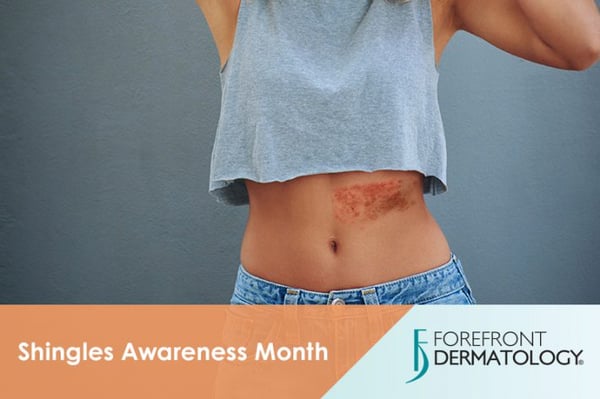
If You’ve had Chickenpox, You’re at Risk for Shingles You may vaguely remember having chickenpox as a child – if not the itchy, blistery rash, perhaps wearing mittens all day to keep you from scratching and watching “The Price is Right” in quarantine. While the unpleasant experience may be a distant childhood memory, the chickenpox virus, also called varicella zoster virus, may awaken much later in life in the form of shingles. In honor of Shingles Awareness Month, we’re giving you the lowdown on this hidden menace. “Feels Like the Worst Sunburn Ever” Itching, burning, and aching, shingles has been described as the relatively mild “feeling like you’ve been bitten by the mother of all mosquitos” to the substantially more alarming “such an intense ache that I thought I was passing a kidney stone.” It usually starts as a blistery rash on one side of the face or body, though you may feel pain, itching or tingling in the area before the rash develops. In its early stages, when blisters are open or oozing, shingles is very contagious through direct contact, so it’s advised that you keep it covered – unfortunately, covered rashes are also very uncomfortable. In addition to the rash, you may experience headache, chills, fever or upset stomach. Basically, you’re in for an unpleasant experience no matter how you cut it. Incredibly Common, Incredibly Uncomfortable While it’s an unpleasant experience, shingles is incredibly common. According to the National Institutes of Health, there are an estimated one million cases of shingles each year in the United States alone. In fact, one in four healthy adults will get shingles in their lifetime. So who’s most at risk for developing shingles?
- Those who have had chickenpox.
- Those who have not had chickenpox, but have been in contact with someone with shingles.
- Older adults – you’re 10 times more likely to get shingles over the age of 60 than under the age of 10.
- Those with weakened immune systems from disease or taking immunosuppressant medications.
Preventing and Treating Shingles If you’re experiencing any of the symptoms associated with shingles, see your dermatologist immediately. He or she can prescribe antiviral drugs that will help lessen the severity and shorten the length of time you’re affected – typically 2 to 4 weeks. Additionally, pain medication may be prescribed for discomfort. Though ancillary effects caused by shingles are very rare, one in five people – typically older adults – may experience severe pain even after the rash is gone. For those 60 years and older who are most at risk for developing shingles, your dermatologist can administer the VZV (Zostavax) vaccine can help prevent shingles and long-term effects. Uncomfortable and alarming, shingles is no laughing matter. If you’re worried that you may have shingles or would like to learn more about VZV vaccine, the skin health experts at Forefront Dermatology are ready to help. To find the Forefront physician nearest you, visit the Locations page today.





